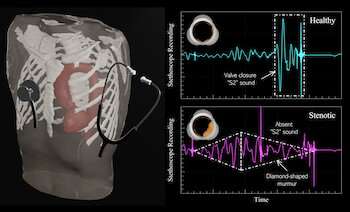
When you’re staring petrified at the new Resident Evil movie, or breathlessly following along to a vintage Jane Fonda aerobics video, what happens to your blood flow?
Ph.D. candidate Joseph C. Muskat and a group from Purdue University created algorithms that model how healthy young adults respond to fear- and exercise-induced stress. The simulations allow scientists to probe parts of the cardiovascular system individually and measure blood pressure and flow patterns—difficult feats in living, breathing humans.
“Computer models may clarify how the human circulation evolved to increase survival or to optimize function of our muscles, organs, and nerves. The flow forces we study are known to influence vessel health and support production of hormones and organic substances, which can improve athletic performance,” said Muskat.
Two independent research teams, including Muskat’s, present new cardiovascular computer models at the 74th Annual Meeting of the APS Division of Fluid Dynamics. The research reflects a trend that promises to revolutionize heart health.
The Purdue group’s plugin for measuring flow patterns in response to fear and exercise shows how blood flow in large arteries may differ from normal expectations at rest, increasing stress on the vessel wall. All the models are publicly available.
Meanwhile, at Johns Hopkins University, fluid dynamicist Shantanu Bailoor and collaborators found a way to use artificial intelligence to detect when hearts are poised to fail completely, but long before symptoms begin to show.
“Listening to heart sounds is a valuable, centuries-old tool in the physician’s repertoire to infer heart health,” said Bailoor. “But this skill suffers from poor accuracy and has seen an unfortunate decline among clinical practitioners.”
Machine learning boosts a physician’s ability to hear the sounds of a breaking heart valve—improving diagnostic accuracy from roughly 30% to 90%, Bailoor and colleagues reported in a paper last month.
Heart disease is the leading cause of death in the United States. In particular, when replacement valves fail without warning, they can lead to heart attacks and strokes. The new computer model uses stethoscope recordings to catch mild and even asymptomatic valve problems early, without a costly and invasive angiogram.
Source: Read Full Article